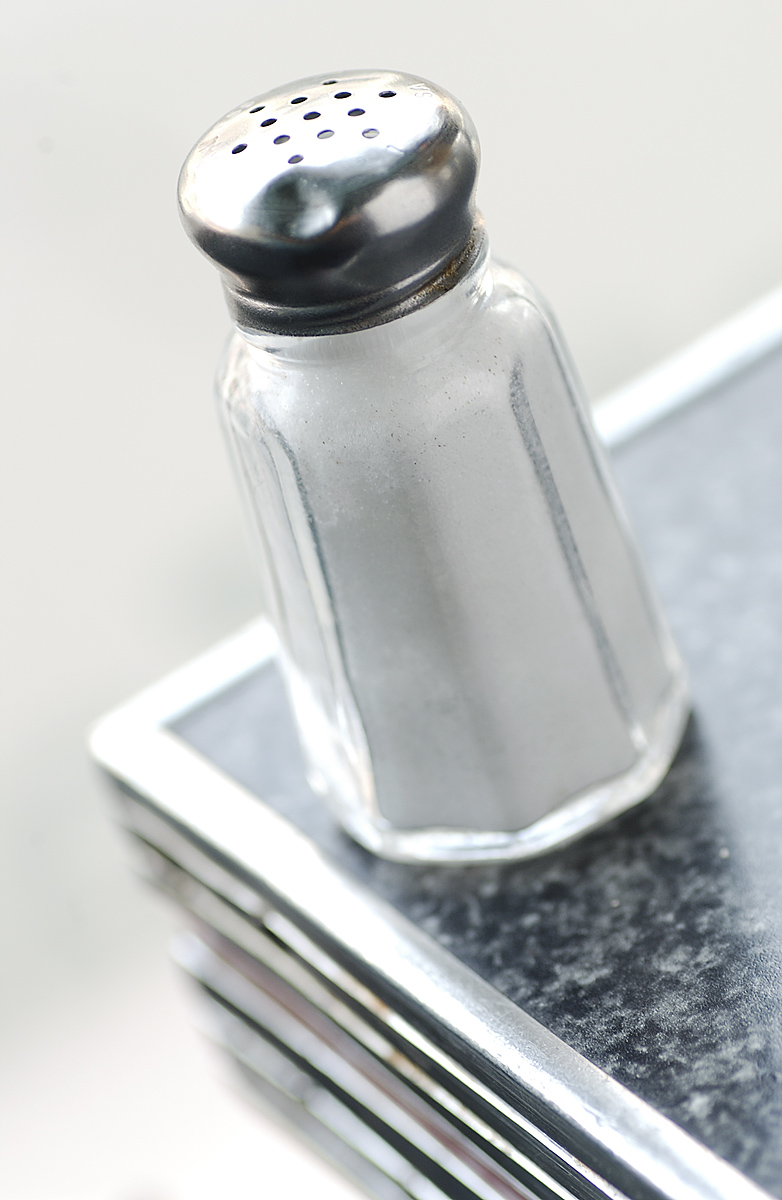By Lisa Kaschmitter, Arizona State University Nutrition Student
Sodium levels in food and the way a high daily intake of sodium affects our bodies has become a major topic in health and nutrition. Many people have reduced their use of salt in home cooked recipes because of their concerns about sodium. Although this helps reduce overall intake, the foods that really drive high-sodium levels are restaurant meals, processed foods, and prepackaged meals. The sodium from these sources makes up over 75% of sodium in our diets.1

The daily recommended limit for sodium is 2,300 milligrams for the majority of individuals, but they recommend limiting sodium intake to 1,500 milligrams in some circumstances.2 You may recognize different wording that is used by the FDA when talking about sodium intake. For many vitamins, minerals, and nutrients they have a daily-recommended intake when it comes to sodium they use the word limit because our bodies need to intake very little sodium to function properly.1
The Ill Effects of Too Much Sodium
There are many negative health effects of consuming too much sodium. For starters, there are strong links between high blood pressure and sodium intake.1 High blood pressure can translate into major, even life-ending health problems. Cardiovascular conditions including an elevated risk of heart attack and stroke are influenced by high blood pressure.1 A solution to this high blood pressure problem has been to reduce a person’s intake of processed and prepackaged foods, and reduce the frequency of restaurant meals.1
A great benefit of cooking at home is being more in control of the sodium levels in food. Many people worry that in order to cut back on sodium they must completely cut out canned products that are much more cost effective to use. Although it is true that canned products can have high amounts of sodium, it’s still possible to utilize canned foods for home cooking. The most important thing to do is to read the label.
Many products are available in low-sodium or no-sodium versions. It can be a fun grocery shopping game to compare the labels of the reduced-sodium foods to that of their full-sodium counterparts. For instance, 1 cup of canned green beans has 800 milligrams of sodium, while 1 cup of reduced sodium green beans only contains 400 milligrams of sodium.3 Both contain no cholesterol, 2 grams of fiber, 2 grams of protein, and 40 milligrams of calcium.3 They taste identical as well.
The History of Sodium in Our Diets
So if sodium is a major contributor to such negative health effects, why does so much of it end up in our foods? In order to understand this, we must examine the history of sodium use in food. Historians do not know when sodium was first introduced into our diets, but they do know there is evidence of the use of salt containing nitrates in 850 B.C.4 It played the same very important role it is used, for now, to preserve foods.1,4 The process of salting meat to preserve food is known as curing, and it dates back to the time of Homer, and Greeks and Romans were known to use the process as well.4
It was discovered in the 20th century that nitrate played a key role in preserving the redness of meat, because of the inhibition of the Clostridium botulinum organism that caused the meat to gray with age.5 The main uses of sodium have not changed through all this time. It is still used to preserve foods, to enhance flavor, and to improve the appearance of processed foods.1 When foods of today are processed they sometimes pick up unusual tastes that, as consumers, we might not like. These bitter and off tastes can be mitigated by the taste of salt.1 Sodium can also increase the shelf life of foods, and prevent bacteria from growing.1 Appearance-wise it can help to restore appetizing colors that may be lost during the processing of foods and it can stabilize textures that may otherwise change over time.1
If you want to avoid excess sodium in your diet, there are a few huge culprits to watch out for that you may not think of. The American Heart Association recommends people check labels to find low-sodium options for breads, rolls, cold cuts and cured meats (such as deli meats), and premade soups.6 They also recommend avoiding many poultry products due to increasing sodium content with certain preparation methods.6 Lastly, pizza and sandwiches can quickly add up to more than the recommended daily limit for sodium intake.6 In pizza, the bread and cheese are the major culprits. Try a flatbread with less cheese and more veggies to reduce sodium levels on this favorite. With sandwiches, it’s not only the bread and cheese but also the deli meat. They suggest half a sandwich with a side salad, or you can skip the cheese, half the meat, and add extra veggies.6 With either option your blood pressure and heart will thank you for it.
References
- Get The Facts: The Role of Sodium in Your Food. Centers for Disease Control. CDC. June 2012. Web. 30 November 2015.
- Scientific Report of the 2015 Dietary Guidelines Advisory Committee. USDA. Department of Health and Human Services. February 2015. Web. 30 November 2015.
- Calorie King. Calorie King Site. 2015. Web. 30 November 2015.
- Meat Curing. Frederick K. Ray. Oklahoma Cooperative Extension Service. n.d. Web. 30 November 2015.
- Historical Origins of Food Preservation. Brian A. Nummer. National Center for Home Food Preservation. May 2002. Web. 30 November 2015.
- The Salty Six- surprising foods that add the most sodium to our diets. Suzie Sodium. American Heart Association. 7 October 2014. Web. 30 November 2015.

